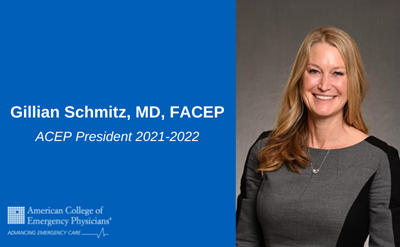WASHINGTON, D.C.—As national health care spending rises, emergency care stands out for its role in helping patients avoid costly care in other parts of the hospital. New research in JAMA Network Open underscores the value of emergency care and finds that the total cost of care for Medicare beneficiaries treated in an emergency department (ED) declined over a six-year period.
“Too often discussions of the cost of emergency care fail to consider the bigger picture—that spending on emergency care can save lives, alleviate suffering and in some instances avoid the need for a more expensive hospitalization,” said Laura Burke, MD, MPH, FACEP, emergency physician at Beth Israel Deaconess Medical Center and lead study author. “Emergency physicians treat anyone, anytime and serve as the safety net for the nation’s acute care system. Our research suggests that outcomes improved for Medicare patients using the ED, and that emergency physicians are finding ways to safely send patients home by providing care that is patient-centered and cost-saving.”
The study, “Trends in Costs of Care for Medicare Beneficiaries Treated in the Emergency Department 2011-2016,” finds that despite an overall rise in health care spending between 2011 and 2016, the total 30-day costs of emergency care declined by 8 percent. During that period, the mortality rates of Medicare beneficiaries visiting the ED improved and hospital admissions directly from the ED declined indicating that the cost savings to the broader system is not coming at the expense of quality patient care.
Outpatient ED visits are often portrayed as a failure of the primary care system to manage acute and chronic disease, but these findings reflect the success of the ED in avoiding more costly hospitalizations and contributing to lower Medicare spending. Emergency physicians can rapidly perform a comprehensive range of tests and procedures, which differentiates their capabilities from primary care or urgent care and often means that patients can be treated then sent home to recover. And, observational care in the emergency department provides an additional value as patients can be expertly monitored without being admitted to the hospital.
The findings of the study are particularly salient as the rise in ED utilization and the increasing intensity of care has caught the attention of policymaker and clinical leaders alike. The study examined more than 14 million emergency visits by Medicare beneficiaries between 2011 to 2016 at 4,730 emergency departments. “Total cost of care” includes the initial and subsequent emergency visits and physician costs, observation care, outpatient care outside the emergency department, and post-acute care.
This research was funded by a grant through the Emergency Medicine Foundation, a nonprofit organization created by the American College of Emergency Physicians to support emergency medical research and education.
“Patients are visiting emergency departments with more severe illness and more complex chronic conditions while the quality, efficiency and value of emergency care continues to improve,” said David E. Wilcox, MD, FACEP, Chair of the Emergency Medicine Foundation Board of Trustees. “Emergency physicians are consistently and persistently enhancing the quality of care, improving patient outcomes, and providing better value to the broader health care system.”
 American College of Emergency Physicians
American College of Emergency Physicians







